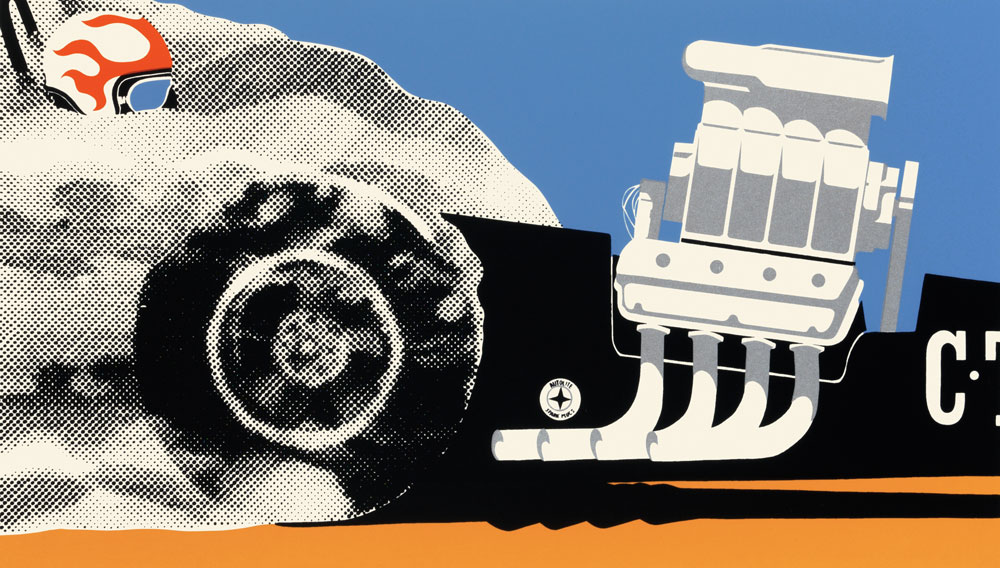Source and Stimulus | Lévy Gorvy
This pocket blockbuster of an exhibition is devoted to the ‘Ben-day dot’: those little dots on printed paper that make up images, if you look closely enough. Visible printed dots making up images on low-grade paper are, of course, a relic of the 20th century.
The advent of Pop Art in the 1960s was all about artists getting into commercial culture, and its mass-produced physical relics. This meant, for Sigmar Polke, Roy Lichtenstein and Gerald Laing, painstakingly painting reproductions of Ben-day dots to render iconic reproductions of pictures they saw in magazines, ads and pulp fiction books. They used their technical excellence to suggest the junkily mass-produced.

Each artist worked to subtly different ends. And it was Laing, the least-known of the three, who stood out for me.
A Brit in New York, Laing depicted astronauts, bikini-clad girls and racing cars. But along with a sense of wide-eyed glee at technological progress (very 60s) came a murderous edge. One eye-popping, large-scale work, reproduces a frame from the Zapruder film of the Kennedy assasination, itself reproduced in a magazine photo-spread: a reproduction of a reproduction of a reproduction. The drama of accidentally iconic cine-film is amped up by crucial sections of the painting, from Jackie’s pink pill-box hat, to her husband’s hands clutching his own throat, to the panicking secret service man in the front seat, being rendered in extra-large dots.
Another automotive horror is on the opposite wall. ‘CT Strokers’ (like the Zapruder painting, made in 1964) shows a drag race driver, trapped in his burning car. I assume this image, in which the disaster is still more explicit, is also based on a magazine photo, and therefore another real life auto crash. Though Google doesn’t turn up any information about a real-life CT Strokers. Unlike JFK, his fate is unknown.
Racing cars seem to have been a bit of an interest for Laing. A postcard from Robert Indiana, another pop pioneer, in a nearby display cabinet features F1 ace Jim Clark in the iconic 1967 Lotus racer. Clark himself was to die in a Lotus the following year.
Elsewhere in the show, a standout Polke, ‘Girlfriends’, from the mid-60s: innocuous from afar, terrifying close-up. And, along with some classic comic reproductions, a genuine Lichtenstein curio, for me at least: a shiny aluminium sculpture of an African fetish figure - from 1992.
Source and Stimulus: Polke, Lichtenstein, Laing is at Levy Gorvy (London). 6 March - 21 April 2018.